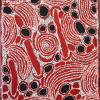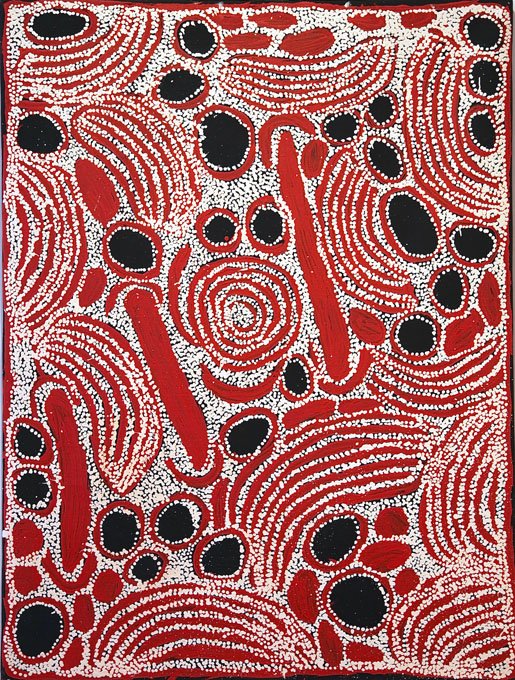Originally from the Gibson Desert and a member of the Kintore artistic community, Ningura Napurrula settled in Papunya with other members of the Pintupi ethnic group, who had been driven from their ancestral territories by the government's policy of displacing aboriginal populations, as well as by the degradation of their environment caused by the introduction of livestock onto their land.
When painting on canvas began to develop in Papunya in the 1970s, Ningura Napurrula's husband, Yala Yala Gibbs Tjungurrayi, imposed the traditional motifs that had been used until then in floor paintings celebrating the ‘Tingari Men’, emblematic figures of the Pintupi.
It was from him that the artist learnt how to depict the Dreamtime, during which ancestors travelled the Australian continent in the company of their wives and young apprentices, founding ceremonial sites at each stage of their journey.
At the end of this period of artistic initiation, Ningura Napurrula began to paint more personal works, such as this canva in which she evokes Wirrulnga, a watering hole located in the heart of a rocky outcrop to the east of the aboriginal community of Kiwirrkura, in the middle of the desert.
Legend has it that this site was once created by a group of women who set up camp here before continuing on to Lake Mac Kay. During their stay, one of the women gave birth, and it was from this birth that the site itself was born.
The concentric circle seems to depict the birth of the waterhole itself. The thick red lines represent the puzzles or ‘nulla nulla’ that the women carried with them, symbolised by the ‘U’ shapes at their ends.
The black circles are wild grapes that the women fed on during their wanderings. Finally, the crescent shapes streaked with white dots are the skirts - nyimparra - woven by the ancestors from hair.
This painting is provided with a certificate of authenticity.

